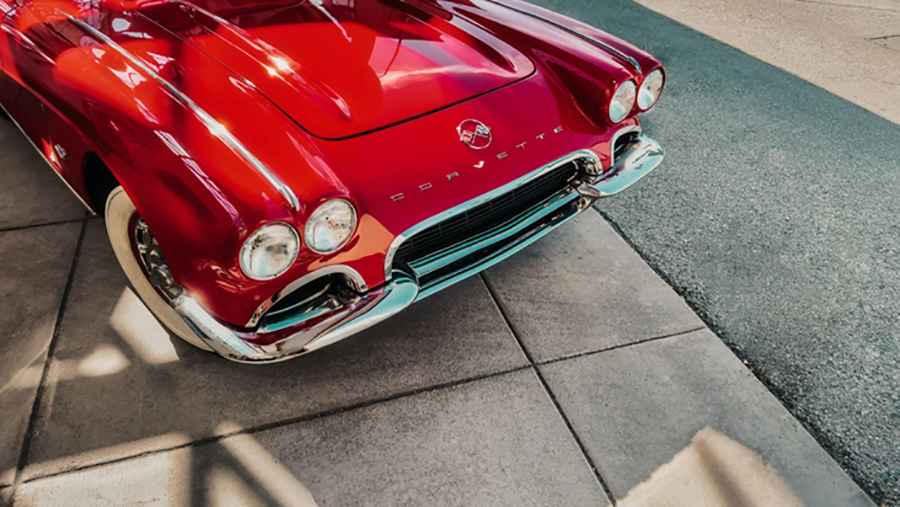How to Handle Sharp Turns in Your Corvette
When the highway curves like a roller coaster and your Corvette yearns to dance, your hands better have learned the dance. Every Corvette driver remembers the moment: the twist of the road before him, the rumble of the engine coiled and waiting, the thrill of getting around a hairpin turn that makes the self-assured different from the cautious. Sharp turns aren't only a matter of survival; they're about converting what could be an anxiety-filled adventure into pure driving poetry.

The Corvette is a finely crafted piece of art that requires expertise, respect, and a deep comprehension of its possibilities. It is not a car. These vehicles, which range from the vintage C2 Stingray to the modern C8, are designed to push limits—but only when driven by a skilled professional.
Investing in high-quality Corvette accessories, including performance suspension kits and high-grip tires, will significantly improve your vehicle's handling on tight turns as you prepare for high-performance driving.
Mastering Vehicle Dynamics
Tight turns are a delicate ballet of physics, engineering, and driving ability. Your Corvette is not a machine but a precision tool answering every micro-motion. Weight transfer is key; it makes physics an art form that you will have to learn to master.
The car's weight shifts wildly in a turn, with a precarious balance between centrifugal force, friction, and momentum. Picture your Corvette as an athlete of high performance, muscles coiled and poised to leap. Every turn challenges balance, precision, and sheer mechanical poetry.
The rear-wheel drive setup of most Corvettes puts you in a car that's inherently more dynamic than front-wheel drives. This isn't a technical nicety—it makes driving a Corvette special. The load moves differently, the steering responds more sensitively, and the entire automobile is an extension of the driver's will.
New Corvettes come with high-tech stability control systems, but they're instruments, not canes. They can assist, but they can't substitute for good driving. Learning how weight transfer works, how traction operates, and how to interpret the road becomes your best performance upgrade.
Driving Techniques for Sharp Turns
Professional drivers have a secret: smooth is fast. Forget jerky movements. Your approach should be fluid, almost musical. Enter the turn wide, gradually apex toward the inside, and smoothly accelerate out. It's a dance that requires practice, patience, and passion.
Speed management is your primary tool. Brake before the turn, not during. This stabilizes the car's weight and prevents potentially hazardous mid-turn weight shifts. Imagine it as a well-rehearsed dance move—every move is intentional, calculated, and fluid.
Body positioning matters more than most realize. Look through the turn, not directly in front of your bumper. Where your eyes go, the car follows. It's as if an unseen string ties your eyes to the vehicle's path. Your hands must be light on the wheel—grip too hard, and you'll struggle against the car's natural momentum.
The line through a turn is everything. They spend years mastering the technique of the ideal racing line—the most economical course that preserves speed and reduces unnecessary travel. For Corvette owners, this translates to comprehending how to utilize the vehicle's full road width position to achieve optimal speed and minimal steering effort.
Common Mistakes to Avoid
Rookie mistakes can turn a thrilling drive into a potential disaster. Over braking, sudden steering corrections, and panicking are your enemies. Many drivers tense up during sharp turns, paradoxically making the car harder to control.
Panic is the most significant performance killer. When the road bends, your head must stay straightforward and alert. Your hands must be light, and your actions light and precise. Imagine it like a game of chess—you're always a few moves down the line, ready for the road's next obstacle.
Another critical error? Underestimating momentum. A Corvette's power means you're always one split-second decision away from mastering the turn or losing control. Respect the machine, understand its limits, and most importantly, know your own.
Traction is your best friend and most volatile companion. Understanding how your tires grip the road, how weight transfer impacts traction, and how to maintain control through turns separates the proper performance drivers from the weekend warriors.

Safety First
Practice isn't just recommended—it's essential. Your best training grounds are empty parking lots, professional driving courses, and a controlled environment. Learn to feel the car's limits without risking your safety.
Professional driving schools offer invaluable experience. They offer controlled environments where you can test your abilities and your Corvette's limits without the dangers of public roads. These are not classes—these are experiences that change lives and can take an average driver and turn them into a skilled performance driver.
Invest in the right gear: good-quality tires, properly serviced suspension, and well-responsive brakes. These are not indulgences; they're your salvation when the road turns nasty. Maintenance is not about keeping your Corvette on the road—it's about delivering maximum performance when required.
Conclusion
Smooth cornering in a Corvette is not merely survival but also transformation. Every turn of the road presents the chance to transform your driving from ordinary to marvelous. With practice, discipline, and regard for your vehicle, you'll turn those heart-stopping moments into sheer driving bliss.
Photo by //unsplash.com/@switchinglanes">Deepthi from Unsplash
Photo by //unsplash.com/@zacknichols">Zack Nichols from Unsplash